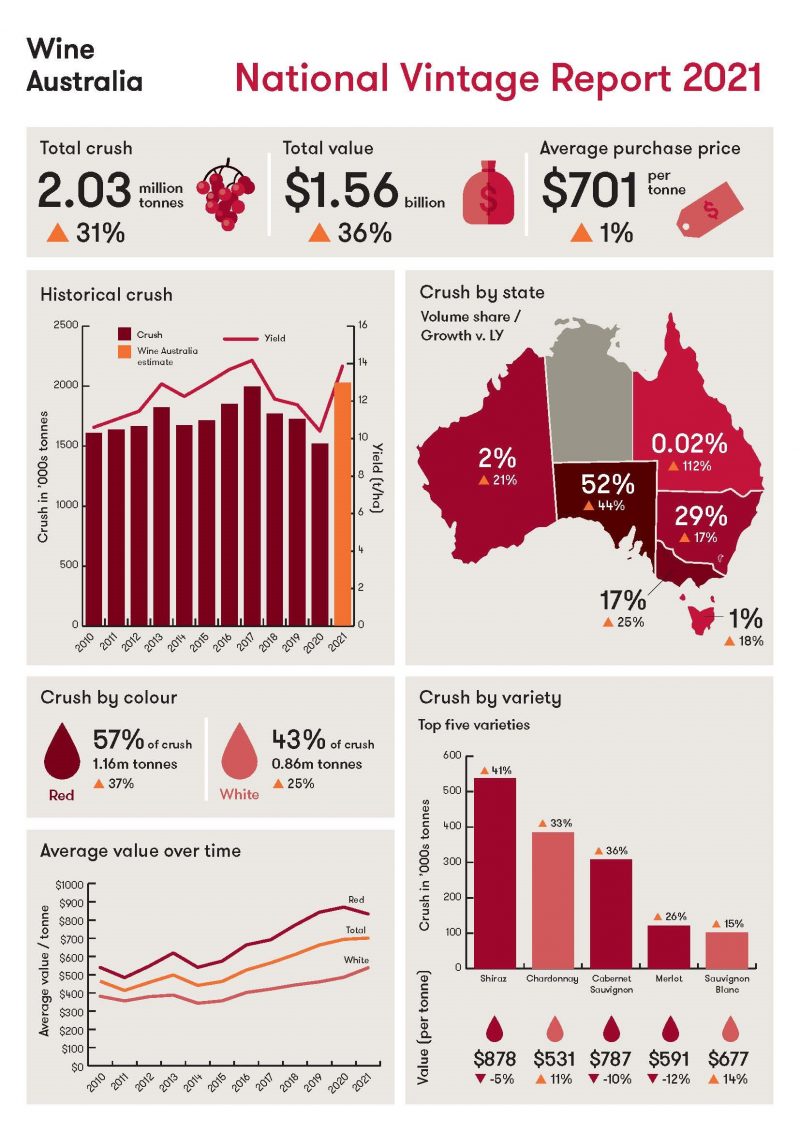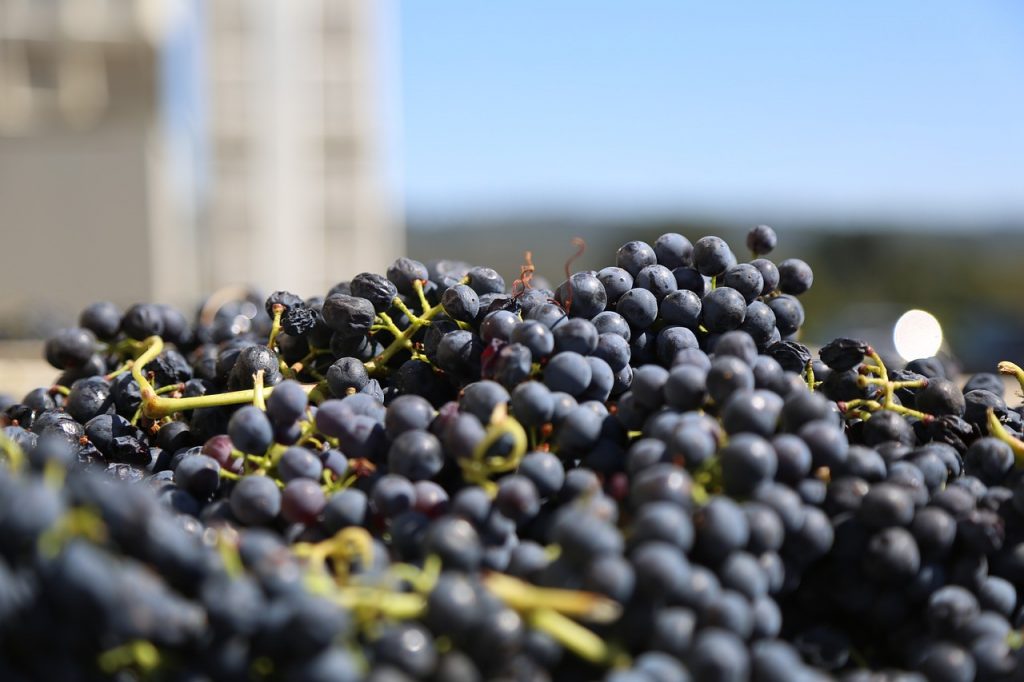The Australian wine sector has rebounded from two successive small vintages to produce a record crop of 2.03 million tonnes in 2021, after a season characterised by near-perfect growing and ripening conditions across most states and regions, according to the National Vintage Report 2021 released today by Wine Australia.
Wine Australia general manager, corporate affairs and regulation Rachel Triggs said 2021 was being described as a ‘unicorn’ vintage because of the rare combination of events leading to both exceptional quality and a good crop size.
“Good fruit set, plenty of water at the right time, lack of heatwaves, low disease pressure, and favourable harvest conditions have resulted in a high-yielding, high quality vintage,” Triggs said.
The 2021 crush was 31 per cent higher than the 2020 vintage and 19% above the 2019 vintage. The larger crush balanced out the two previous small vintages, with the average of the three being closely in line with the 10-year average of 1.74 million tonnes (Figure 1).

South Australia was the largest contributor of the states, with an estimated harvest of 1.06 million tonnes (52% of the national total), followed by New South Wales with 580,875 tonnes (29%) and Victoria with 334,834 tonnes (17%).
“This vintage provides an opportunity for depleted inventory levels to be restored, ensuring we have the supply we need to take up new export opportunities,” Triggs said.
Red grapes made up 57% of the crush comprising 1.16 million tonnes, an increase of 37% over the previous year. The white varieties comprised 864,946 tonnes, an increase of 25%. Overall, white variety’s share of the crush reduced to 43%, the lowest since 2004.
The main contributor to the increase in red crush was Shiraz, up by 41% to a record 538,402 tonnes. This saw its share increase by one percentage point to 46% of all red varieties and 27% of the total crush.
The total value of the crush at the weighbridge increased by more than $400 million (36%) to $1.56 billion, with the increased crop size amplified by a small increase in overall average value, up by 1% to $701 per tonne. This was the highest since 2008.
The overall increase was made up of a 4% decrease in the average value of reds to $833 per tonne, offset by an 11% increase in the average value of whites to $538 per tonne (Figure 2).

Triggs said that concerns prior to vintage, about the effect on grape prices of the tariffs imposed by the Chinese government on Australian wine, had not been realised in 2021. However, she noted that the overall increase partly reflected growth in the contribution of higher-priced fruit to the average.
“That’s not to say that some producers aren’t doing it tough. Exposure to China is very variable from one producer to another depending on their ability to diversify, cash flow and the ability to physically hold stock and it will take producers some time to bounce back, which could also have flow-on effects for growers,” Triggs said.
In a note of caution, Triggs said that the average value for red varieties had declined in 2021 for the first time since 2014, while whites had continued to increase in value, indicating that demand is now shifting towards whites.
“To make the most of our opportunities in markets such as the United States and the United Kingdom, the balance in supply between red and white winegrapes may need to change.”
“We are working closely with Austrade to grow our exports in emerging Asian wine markets such as South Korea, Taiwan and Thailand, where there has been strong growth in recent times and where consumers strongly favour red wine,” Triggs said.

Are you a Daily Wine News subscriber? If not, click here to join our mailing list. It’s free!
















